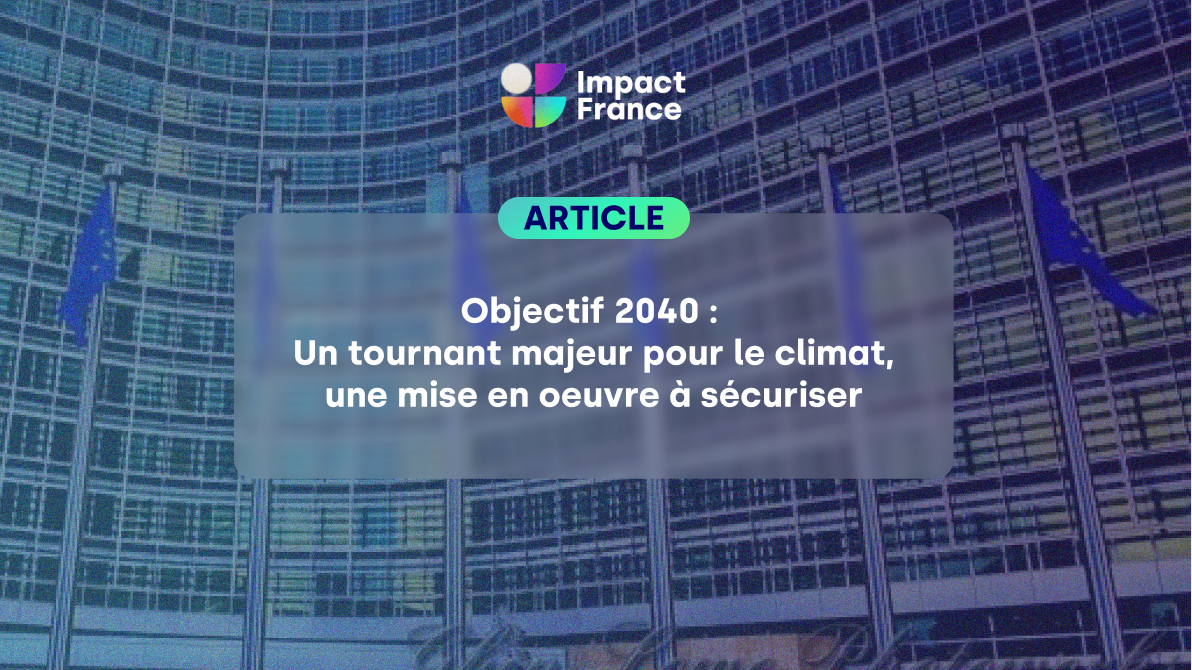Objective 2040: A major turning point for the climate, with implementation to be secured


On the eve of COP 30 in Belém, the 27 member states finally reached agreement on an ambitious trajectory: to reduce greenhouse gas emissions by at least 90% by 2040, compared with 1990 levels. This target, set after months of uncertainty and a real risk of postponement, represents a historic step forward. It responds to the scientific requirement - to reach the minimum threshold needed to stay on a trajectory compatible with the Paris Agreement (+1.5 to +2°C) - and to a strategic demand from companies: to have a clear, stable and credible course for planning their investments and accelerating their transition.
This agreement, which seemed out of reach just a few weeks ago, marks the return of the predictability expected by all companies ready to invest and commit to a low-carbon economy. Throughout this period, Impact France has helped to structure the appeal of thousands of business leaders committed to the rapid adoption of an ambitious, credible and legally binding trajectory to 2040, incorporating a clear roadmap with :
This objective is accompanied by an intermediate milestone of 2035, expressed not as a single target, but in the form of an emissions reduction range of between 66.25% and 72.5% compared to 1990, which will constitute the European Union's NDC (Nationally Determined Contribution) for COP 30.
The agreement also includes a number of interesting levers for action to achieve these objectives, including :
Despite its ambition, a number of elements appear to weaken the effectiveness of the agreement, such as the one-year delay of ETS 2, at a time when companies immediately needed the price signal to guide their investments, the persistent vagueness surrounding the revision of the MACF (border carbon adjustment mechanism), the reauthorization after 2035 of the sale of low-carbon fuel vehicles, or the possibility of using up to 5% of international carbon credits. Without rapid clarification, these are all elements that could put the brakes on key sectors for European resilience, innovation and prosperity.
While we welcome the direction taken, we would also like to draw attention to a major risk: the gap between political announcements and actual implementation. To maintain the -90% target, Europe will have to speed up, not slow down.
Europe finally arrives in Belém with a common position—a crucial diplomatic advantage. Mais la réussite de cette stratégie dépend désormais :
The objective has been set. Now it's all about execution.

Mouvement Impact France welcomes the European Commission's proposal to revise the SFDR regulation.
.jpg)